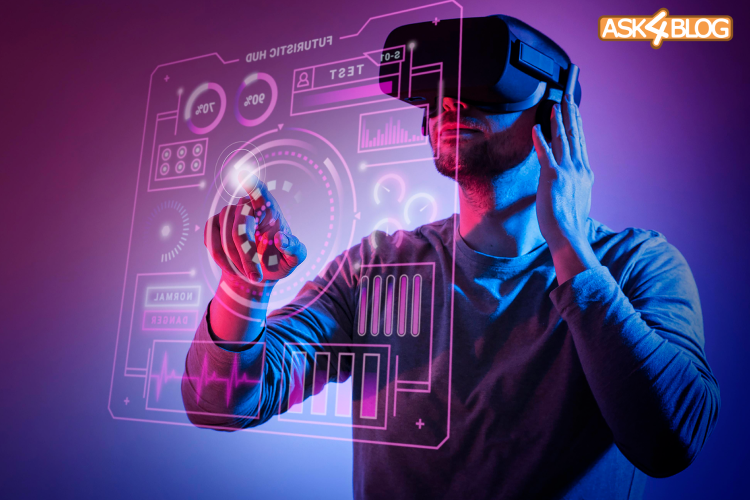The advent of the internet has completely transformed how we communicate, obtain information, and engage in business activities. With the rapid advancements in technology, the web has undergone significant transformations over the years. One of the latest iterations is Web 3.0, also known as the Semantic Web or the Intelligent Web. In this article, we will delve into the development of Web 3.0 technologies, examining their influence, obstacles, and potential prospects for the future.
What is Web3?
Web3, commonly referred to as Web 3.0, represents the upcoming phase of the internet, characterized as the next generation. It is an evolution of the World Wide Web that aims to create a more decentralized, user-centric, and secure online environment. Web3 technology envisions a future where individuals have more control over their data, online identities, and digital assets.
Within the realm of Web3, significant importance is given to safeguarding user privacy, promoting data ownership, and fostering peer-to-peer interactions. It seeks to address the limitations and challenges of the current Web 2.0, where large tech companies often control and monetize user data. Web3 technologies leverage decentralized systems, cryptography, and blockchain technology to enable trustless transactions and secure data sharing.
History of Web 3.0
Web 3.0, also known as the Semantic Web, has its roots in the early 2000s when the idea of adding meaning and context to web content began to take shape. It aimed to make the web more intelligent and connected by using technologies like metadata, ontologies, and linked data. The advancement of artificial intelligence and machine learning played a crucial role in making the web more personalized and interactive. Additionally, the emergence of blockchain technology further expanded the scope of Web 3.0, enabling decentralization, secure transactions, and ownership of digital assets. With the integration of technologies like the Internet of Things, virtual reality, and augmented reality, Web 3.0 aims to provide a more immersive and user-centric web experience. While still in its early stages, Web 3.0 represents a paradigm shift toward a more intelligent, decentralized, and interconnected Internet ecosystem.
Web 1.0 and Web 2.0
Web 1.0 and Web 2.0 represent two distinct stages in the evolution of the World Wide Web. Here’s an overview of both:
Web 1.0: Web 1.0, commonly known as the “read-only web,” emerged during the initial stages of the Internet’s development. During this stage, websites were static and primarily focused on providing information to users. The content primarily consisted of text-based information and interactive features were limited during that time. Websites were created by individuals or organizations and were typically accessed through desktop computers. Users had limited options for engaging with the content, and the web was primarily a one-way communication channel.
Web 2.0: Web 2.0, also known as the “participatory web” or “social web,” marked a significant shift in how people interacted with the internet. It emerged in the early 2000s and introduced user-generated content, social media platforms, and increased interactivity. Web 2.0 allowed users to create, share, and collaborate on content, leading to the rise of social networking sites, blogs, wikis, and online communities. Websites became more dynamic and interactive, enabling user comments, ratings, and contributions. Web 2.0 also facilitated the emergence of e-commerce platforms, online marketplaces, and streaming services, revolutionizing how businesses and individuals conducted transactions and consumed media.
Evolution of Web3
The evolution of Web3 has been driven by advancements in various technologies and the need for a more decentralized, user-centric web experience. Here is a brief overview of the key components and stages in the evolution of Web3:
Semantic Web: The concept of the Semantic Web laid the foundation for Web3 by adding meaning and context to web content. It aimed to make information machine-readable and interconnected through the use of metadata, ontologies, and linked data.
Artificial Intelligence and Machine Learning: The integration of artificial intelligence and machine learning technologies played a vital role in the evolution of Web3. These technologies enabled the development of intelligent applications, personalized recommendations, and natural language processing, enhancing user experiences and interactions with web content.
Blockchain Technology: The emergence of blockchain technology, with its decentralized and transparent nature, brought about significant changes in Web3. Blockchain facilitated secure and trustless transactions, ownership of digital assets, and the creation of decentralized applications (DApps) that operate on peer-to-peer networks without the need for intermediaries.
Decentralized Identity and Digital Sovereignty: Web3 focuses on giving individuals more control over their digital identities and data ownership. Decentralized identity systems, coupled with blockchain technology, enable users to manage and selectively share their personal information securely, enhancing privacy and digital sovereignty.
Internet of Things (IoT) and Immersive Technologies: Web3 incorporates the integration of IoT devices, virtual reality (VR), and augmented reality (AR), enabling the seamless connection between physical and digital realms. This integration enhances user experiences, facilitates data sharing, and creates immersive and interactive online environments.
The evolution of Web3 continues to unfold as new technologies and innovations emerge. It aims to create a more decentralized, intelligent, and user-centric web ecosystem that empowers individuals, protects privacy, and fosters innovation.
For more information plz click here: About Web3 To Life




1 thought on “Evolution of the Web3.0 Technologies | Find out More”